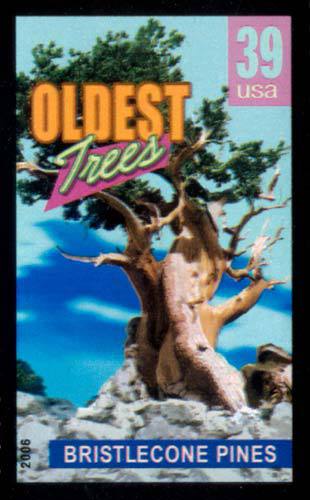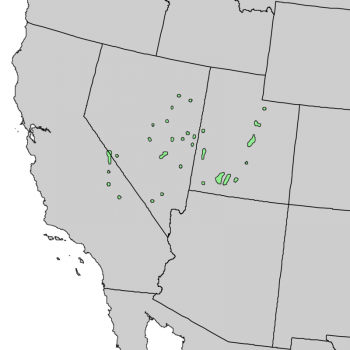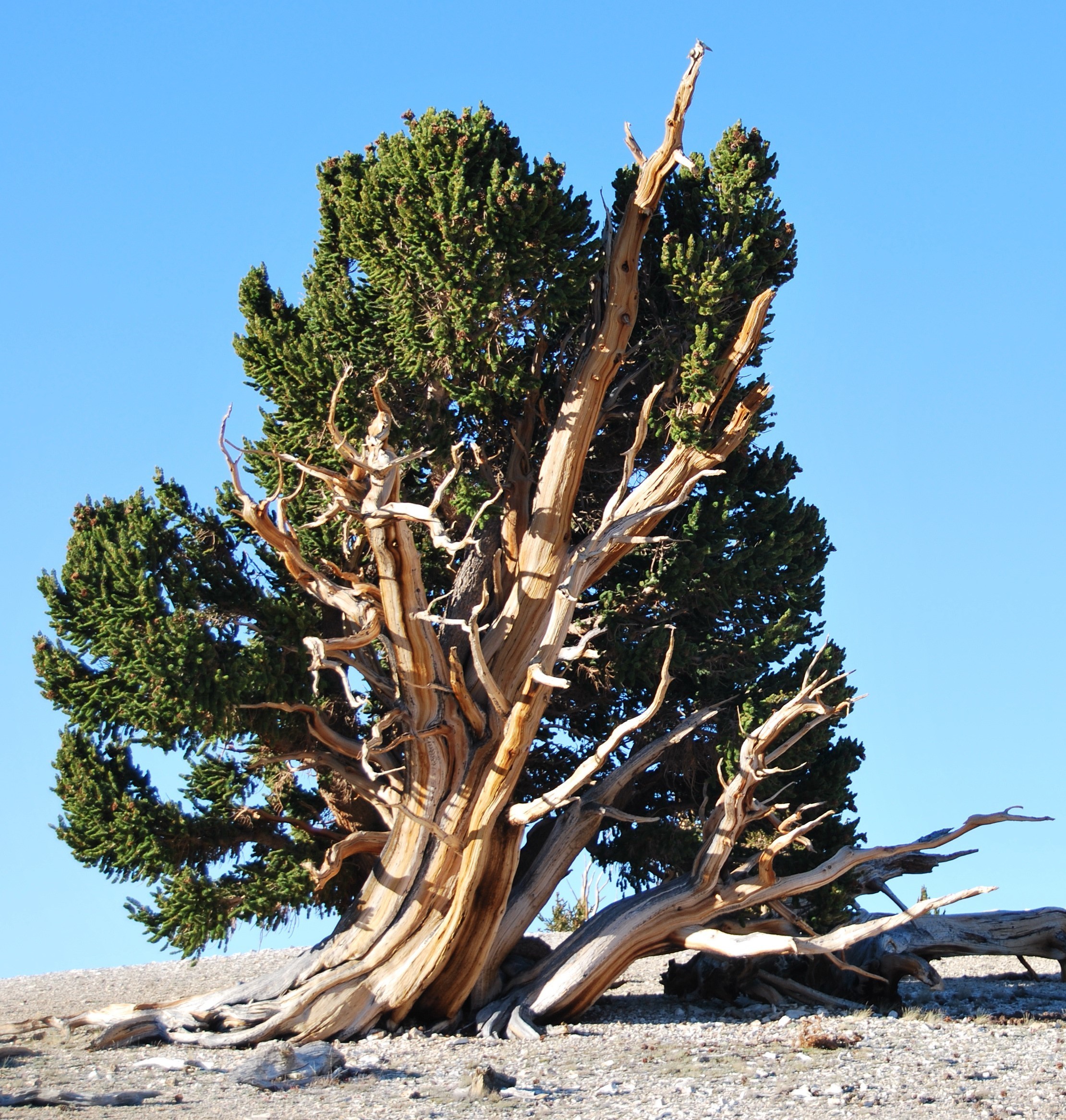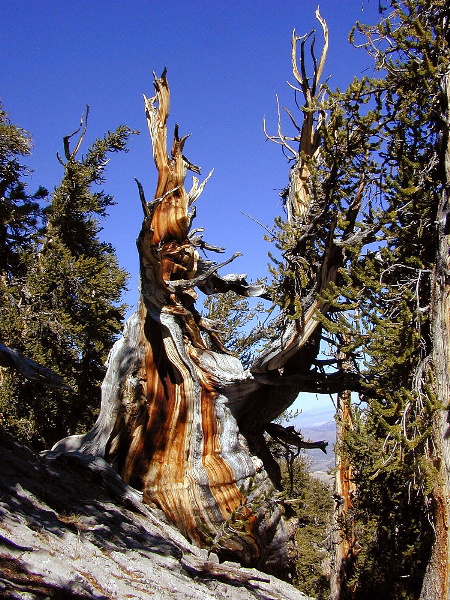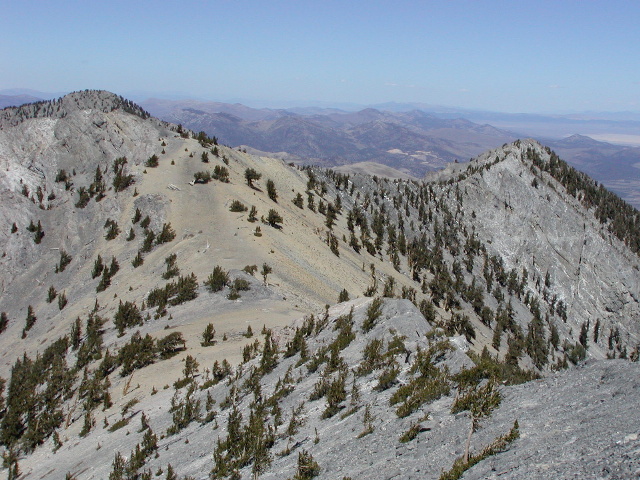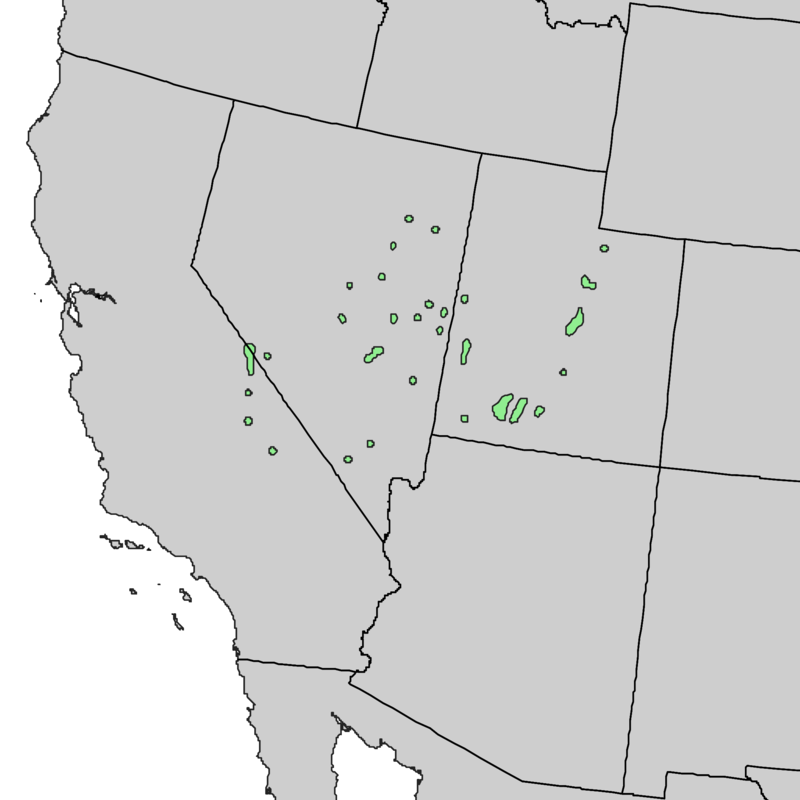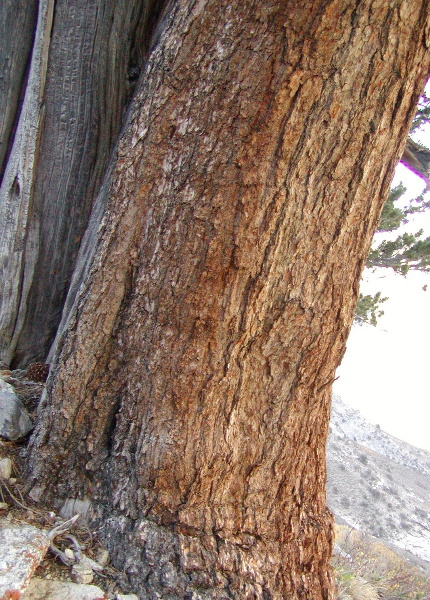subgenus Strobus (Lemmon), section Parrya (Mayr), subsection Balfourianae (Engelmann).
Pinus longaeva was first described in 1970 by D.K. Bailey in Phytogeography and taxonomy of Pinus subsection Balfourianae. ©Annals of the Missouri Botanical Garden. Common names include Great Basin bristlecone pine, as well as intermountain bristlecone pine. These are the world's oldest known living trees, hence the species name.
Description. Great Basin bristlecone pine is an evergreen coniferous species of tree that grows to mature heights of 65 feet (16 m) with a trunk up to 80 inches (200 cm) in diameter, measured at breast height; and rounded or irregular crown, sometimes forming krummholz at the alpine timberline.
- Bark is colored red-brown, fissured with thick, scaly, irregular, blocky ridges.
- Branches are contorted and pendent; twigs are puberulent, pale red-brown in color, aging gray to yellow-gray. Young branches resemble long bottle-brushes because of persistent leaves, closely spaced needle whorls, and uniform needle insertion angles.
- Foliar buds are ovoid-acuminate shaped, resinous, colored pale red-brown and measure circa 0.4 inch (1 cm) long.
- Leaves (needles) are borne mostly 5 per fascicle, upcurved, persisting 10 to 43 years (among the longest persistence times known). Each needles measures 0.6 to 1.4 inches (15 - 35 mm) long by 0.032 to 0.048 inch (0.8-1.2 mm) thick, colored deep yellow-green, with few resin splotches, but often scurfy with pale scales. Abaxial surfaces lack median grooves but has 2 sub-epidermal bands of resin. Adaxial surfaces are conspicuously whitened with stomata. Margins are entire or remotely and finely serrulate distally, with bluntly acute to short-acuminate apex. Foliar sheaths measure circa 0.4 inch (1 cm), forming a rosette soon after needle push, then shed early.
- Pollen cones are cylindro-ellipsoid shaped, colored purple-red, and measure 0.28 to 0.4 inch (7 - 10 mm) long.
- Seed cones mature 2 years after pollination, shedding seeds and falling soon thereafter. Each cone is spreading, symmetric to lance-cylindric shaped with a rounded base before opening; lance-cylindric to narrowly ovoid when open, purple colored, aging red-brown, nearly sessile, and measuring 2.4 to 3.8 inches (6 - 9.5 cm) long. Apophyses are thickened, sharply keeled; umbo is central to the seed scale, raised on a low buttress, truncate to umbilicate, abruptly narrowed to slender but stiff, including a variable prickle measuring 0.04 to 0.24 inch (1 - 6 mm). Cones exude pale resin.
- Seeds are ellipsoid-obovoid shaped with a body colored pale brown, mottled with dark red, measuring 0.2 to 0.32 inch (5 - 8 mm) long with a 0.4 to 0.48 inch (10 - 12 mm) wing.
Distribution. This species is native to USA - California, Nevada & Utah. Growing at subalpine and at the upper (rarely, lower) treeline; typically at elevations of 5,600 to 11,000 feet (1,700 - 3400 m) above sea level.
In many sites it shows a distinct preference for carbonate (limestone, dolomite or marble) substrates. In California's White mountains, for example, the limit of the bristlecone grove coincides with a dolomite/sandstone contact. Bristlecones grow at remarkably high elevations. For example, on Wheeler Peak, Nevada, there are four timberlines - a lower timberline set by the heat and aridity of the valley floor desert, and above that, a timberline set by cold that defines the upper limits of piñon pine (Pinus monophylla) and juniper (Juniperus osteosperma). Still higher, there is a lower timberline of bristlecone pine defined by its tolerance of heat and drought, and above that is a final timberline beyond which winter's cold prevents even bristlecone from growing.
Hardy to USDA Zone 4 - cold hardiness limit between -30° and -20°F (-34.3° and -28.9°C).
